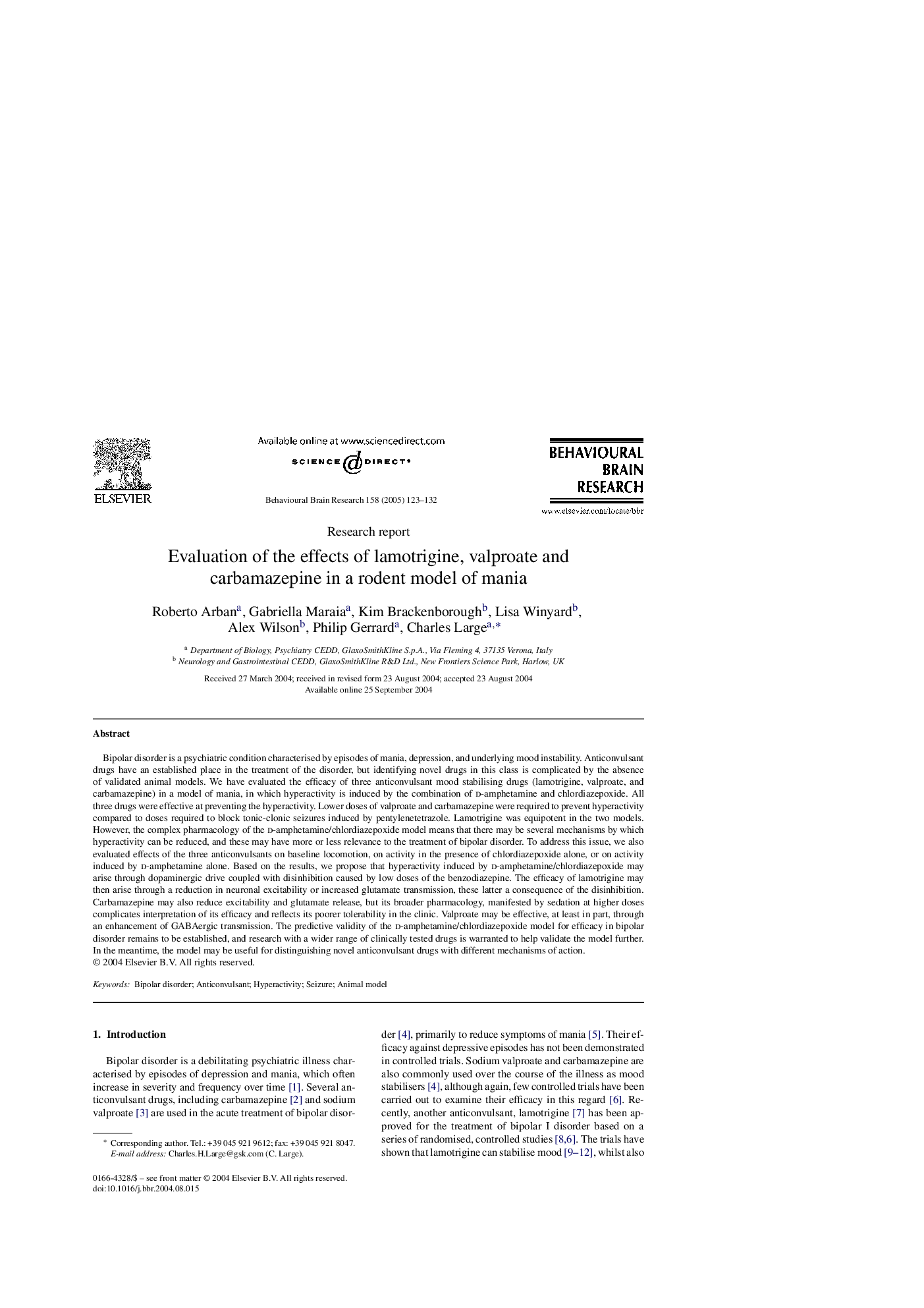| Article ID | Journal | Published Year | Pages | File Type |
|---|---|---|---|---|
| 9406688 | Behavioural Brain Research | 2005 | 10 Pages |
Abstract
Bipolar disorder is a psychiatric condition characterised by episodes of mania, depression, and underlying mood instability. Anticonvulsant drugs have an established place in the treatment of the disorder, but identifying novel drugs in this class is complicated by the absence of validated animal models. We have evaluated the efficacy of three anticonvulsant mood stabilising drugs (lamotrigine, valproate, and carbamazepine) in a model of mania, in which hyperactivity is induced by the combination of d-amphetamine and chlordiazepoxide. All three drugs were effective at preventing the hyperactivity. Lower doses of valproate and carbamazepine were required to prevent hyperactivity compared to doses required to block tonic-clonic seizures induced by pentylenetetrazole. Lamotrigine was equipotent in the two models. However, the complex pharmacology of the d-amphetamine/chlordiazepoxide model means that there may be several mechanisms by which hyperactivity can be reduced, and these may have more or less relevance to the treatment of bipolar disorder. To address this issue, we also evaluated effects of the three anticonvulsants on baseline locomotion, on activity in the presence of chlordiazepoxide alone, or on activity induced by d-amphetamine alone. Based on the results, we propose that hyperactivity induced by d-amphetamine/chlordiazepoxide may arise through dopaminergic drive coupled with disinhibition caused by low doses of the benzodiazepine. The efficacy of lamotrigine may then arise through a reduction in neuronal excitability or increased glutamate transmission, these latter a consequence of the disinhibition. Carbamazepine may also reduce excitability and glutamate release, but its broader pharmacology, manifested by sedation at higher doses complicates interpretation of its efficacy and reflects its poorer tolerability in the clinic. Valproate may be effective, at least in part, through an enhancement of GABAergic transmission. The predictive validity of the d-amphetamine/chlordiazepoxide model for efficacy in bipolar disorder remains to be established, and research with a wider range of clinically tested drugs is warranted to help validate the model further. In the meantime, the model may be useful for distinguishing novel anticonvulsant drugs with different mechanisms of action.
Related Topics
Life Sciences
Neuroscience
Behavioral Neuroscience
Authors
Roberto Arban, Gabriella Maraia, Kim Brackenborough, Lisa Winyard, Alex Wilson, Philip Gerrard, Charles Large,
